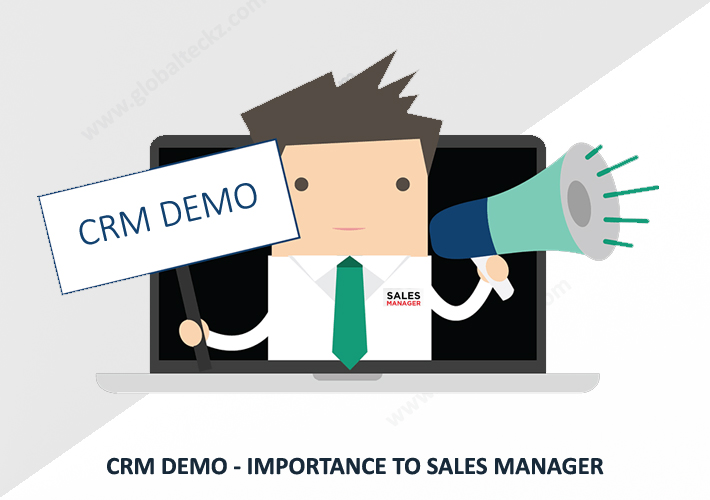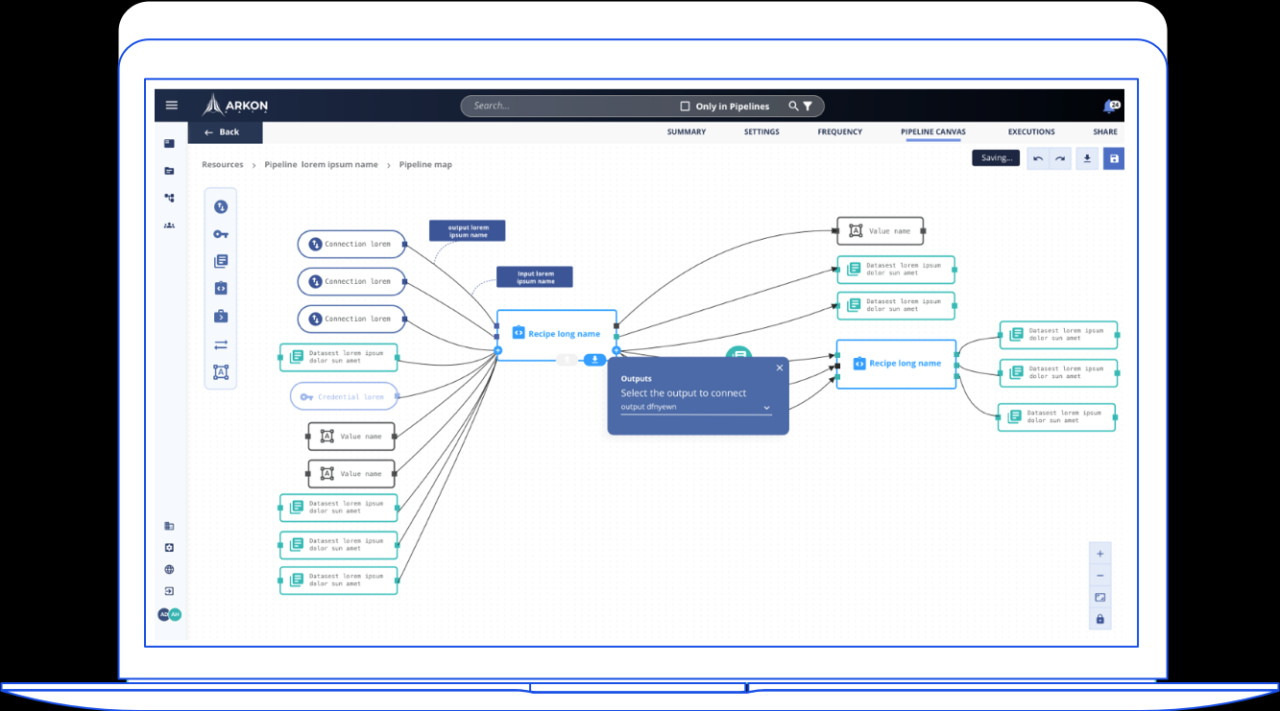Demo CRM sets the stage for this enthralling narrative, offering readers a glimpse into a story that is rich in detail and practicality. A demo CRM serves as a vital tool for businesses, allowing potential users to explore its functionalities and advantages before making a commitment. This exploration not only showcases key features but also highlights the importance of having a demo version, which can significantly influence the decision-making process for users seeking effective customer relationship management solutions.
By providing an interactive experience, a demo CRM enables users to understand how these systems can transform their customer interactions, streamline operations, and ultimately drive success. Engaging with a demo allows businesses to assess user-friendliness, identify essential features, and compare various options available in the market tailored to their specific needs.
Introduction to Demo CRM

A Demo Customer Relationship Management (CRM) system serves as a simulated representation of a full-fledged CRM solution. The primary purpose of a demo CRM is to provide potential users with a firsthand experience of the software’s capabilities, allowing them to evaluate its features, usability, and overall value before making a purchasing decision. This hands-on approach helps users understand how the CRM can address their specific business needs and improve customer interactions.
The demo version typically showcases the core functionalities that a comprehensive CRM system would offer. These features are essential to demonstrate the software’s potential benefits and capabilities. Highlighting these key functionalities ensures that potential users grasp the full scope of what the CRM can achieve for their organization.
Key Features Showcased in a Demo CRM
A demo CRM should effectively highlight several key features that are integral to the user experience. Understanding these features can help potential users appreciate the benefits offered by the system. The following aspects are typically emphasized:
- User-Friendly Interface: A well-designed interface that simplifies navigation and enhances user experience.
- Contact Management: Tools for managing customer information, including contact details, communication history, and preferences.
- Sales Pipeline Management: Features that allow users to track sales processes, monitor opportunities, and manage leads effectively.
- Reporting and Analytics: Robust reporting tools that provide insights into customer behavior and sales performance, enabling informed decision-making.
- Integration Capabilities: The ability to integrate with other software applications, such as email and marketing platforms, for seamless operations.
- Automation Tools: Features that automate routine tasks, such as follow-up emails and data entry, to enhance efficiency.
The inclusion of these features in a demo version allows users to visualize how a CRM can transform their customer relationship management strategies.
Choosing the right RMM system is crucial for aligning with your company’s growth strategy and future needs. A well-selected system can enhance efficiency and support your expansion efforts. To delve deeper into this process, consider exploring our comprehensive guide on Selecting an RMM System for Growth , which addresses key factors to consider.
Importance of a Demo Version for Potential Users
Having a demo version available for potential users is crucial in today’s competitive market. It not only builds trust but also empowers users to make informed decisions. By engaging with a demo CRM, users can assess its functionality and how well it aligns with their specific needs. This trial period can significantly influence the decision-making process by providing insights into customer support, user experience, and overall performance.
“The right demo CRM provides a risk-free opportunity for organizations to explore the software’s features and determine if it meets their requirements.”
This hands-on interaction can also facilitate discussions within teams about the CRM’s suitability and potential return on investment, ultimately leading to more confident purchasing choices.
When it comes to selecting an RMM vendor, evaluating customer feedback and industry reputation is essential. This evaluation can provide valuable insights into the reliability and effectiveness of potential vendors. For a thorough understanding of this critical process, I invite you to read our article on Evaluating RMM Vendors Reviews & , which highlights the significance of user experiences in your decision-making.
Benefits of Using a Demo CRM

Testing a Customer Relationship Management (CRM) system through a demo version offers numerous advantages that can significantly enhance your understanding of how these tools can benefit your organization. Engaging with a demo allows potential users to explore features, assess usability, and determine whether the solution aligns with their business needs.The evaluation of a demo CRM can reveal critical insights regarding its user-friendliness and functionality.
By interacting with the demo, users can gauge how intuitive the interface is and whether it meets their operational requirements. This hands-on experience is instrumental in identifying potential challenges and benefits before making a financial commitment.
Advantages of Testing a Demo CRM
The benefits of utilizing a demo CRM are manifold and can be categorized into several key areas:
- Cost Efficiency: Engaging with a demo allows organizations to save money by avoiding investments in systems that do not meet their needs.
- Risk Mitigation: Demos provide a risk-free environment to assess functionality, thereby reducing the likelihood of choosing an unsuitable CRM solution.
- User Experience Assessment: A demo enables users to evaluate the interface and usability, ensuring it aligns with their team’s capabilities and preferences.
- Feature Exploration: Users can explore various features and tools, helping them understand how these functionalities can streamline their processes.
- Informed Decision Making: Experiencing the CRM firsthand allows for an informed choice, ensuring alignment with specific business goals.
Evaluating User-Friendliness Through Demos
A crucial aspect of any CRM is its user interface and overall usability. A demo serves as an effective tool for evaluating these features. During the trial, users can assess the navigation, accessibility of tools, and overall design, which greatly influences adoption rates among team members. Key factors to consider when evaluating user-friendliness during a demo include:
- Intuitive Navigation: Users should be able to find essential features easily without extensive training.
- Customization Options: The ability to tailor the interface to suit specific workflows can enhance efficiency.
- Support Resources: Availability of help documentation and customer support during the trial period can indicate the level of assistance users can expect post-purchase.
Comparison of Demo CRM Options
The market offers a variety of demo CRM options, each with unique strengths. Comparing these can aid organizations in selecting the most suitable platform for their needs. Some popular options include Salesforce, HubSpot, and Zoho CRM. When comparing different demo CRM solutions, consider the following factors:
- Feature Set: Analyze the range of features offered in the demo and how they align with your business processes.
- Integration Capabilities: Assess how easily the CRM can integrate with existing tools and systems used by your organization.
- Trial Length: Consider the duration of the demo period to ensure sufficient time for evaluation.
- User Feedback: Gather insights from users who have tested the demos to understand their experiences and satisfaction levels.
How to Effectively Utilize a Demo CRM

Utilizing a demo CRM can significantly enhance your understanding of the software’s capabilities and how it can streamline your business processes. A structured approach to navigating through the demo version ensures that you derive maximum benefits from it while avoiding common missteps.Navigating a demo CRM effectively requires a methodical step-by-step approach. This allows users to familiarize themselves with the core functionalities and explore how they can be integrated into daily operations.
The first step is to sign up or request access to the demo version, ensuring that you have the necessary permissions to explore fully. Next, familiarize yourself with the user interface; many CRM systems have a dashboard that provides an overview of key metrics and functionalities.
Step-by-Step Guide to Navigating a Demo CRM
Begin your navigation by identifying the essential features available in the demo version. This often includes contact management, sales tracking, and reporting functionalities. Here is a structured approach to follow:
1. Dashboard Overview
Start by exploring the dashboard, where you can find quick access to various features and important notifications.
2. Contact Management
Navigate to the contact management section to understand how to add, edit, and categorize contacts.
3. Sales Pipeline
Explore the sales pipeline tools to see how leads and opportunities are tracked throughout the sales process.
4. Task Management
Familiarize yourself with how tasks are created, assigned, and monitored.
5. Reports and Analytics
Check the reporting tools to understand how data can be analyzed for strategic decision-making.It’s crucial to document your observations and experiences during this exploration phase.
Common Pitfalls to Avoid When Using a Demo CRM
While utilizing a demo CRM, certain pitfalls can hinder the exploration process and limit the potential benefits. Awareness of these issues can enhance your experience:
Overlooking Training Resources
Many CRM vendors offer training materials and tutorials that can provide valuable insights into the software’s functionalities. Ignoring these resources can lead to missed opportunities for efficient usage.
Navigating Without a Focused Goal
Entering the demo without a clear objective can lead to aimless exploration, making it challenging to gauge the CRM’s fit for your needs.
Ignoring User Feedback
If you are part of a team evaluation, it’s important to communicate and gather insights from other users regarding their experiences and challenges.
Not Testing Customization Options
Many CRMs offer customization features. Failing to test these can result in missing out on tailoring the software to best fit your business processes.
Best Practices for Maximizing the Value of a Demo Version
To ensure that you maximize the value of the demo CRM, consider adopting the following best practices:It is essential to keep in mind that utilizing a demo CRM effectively involves a proactive and questioning approach. Here are some practices to implement:
Set Clear Objectives
Define what you aim to achieve with the CRM in terms of functionality and business needs before diving into the demo.
Engage with Support
Don’t hesitate to reach out to customer support for clarifications on features or to resolve any issues encountered during testing.
Involve Key Stakeholders
Involve team members from various departments in the evaluation process to gather diverse perspectives on the CRM’s functionalities.
Test Real Scenarios
Create scenarios that simulate actual business processes to evaluate how well the CRM handles these situations.
Evaluate Integration Capabilities
Examine how the demo integrates with other software platforms your business uses to ensure seamless data transfer and functionality.By following these guidelines, users can effectively navigate a demo CRM, avoid common pitfalls, and implement best practices that maximize the value of their trial experience.
Key Factors to Consider When Choosing a Demo CRM
Selecting an effective demo Customer Relationship Management (CRM) system is pivotal for organizations seeking to enhance their customer interactions and streamline operations. There are several essential criteria that need to be evaluated to ensure the chosen system aligns with the organization’s specific requirements and long-term goals.A well-chosen demo CRM should offer flexibility, ease of use, and robust functionality. Key factors include customization options and integration capabilities, which are critical in adapting the CRM to unique business processes and ensuring seamless collaboration with existing systems.
Customization Options in a Demo CRM
Customization is an essential aspect that allows organizations to tailor the CRM experience to their specific needs. A demo CRM should provide various customization features, enabling users to modify fields, layouts, and workflows according to their operational requirements. The importance of customization can be highlighted in several ways:
- Personalized User Experience: Customization allows businesses to create a user-friendly interface that enhances usability and encourages employee engagement.
- Alignment with Business Processes: Customizable workflows ensure that the CRM fits seamlessly within existing processes, reducing the need for extensive training and adjustment periods.
- Scalability: As businesses grow and evolve, customizable features enable the CRM to adapt accordingly, ensuring long-term viability and relevance.
Integration Capabilities with Existing Systems
Integration capabilities significantly influence the effectiveness of a demo CRM. A CRM that can seamlessly integrate with existing systems—such as email, marketing automation, and accounting software—enhances productivity and efficiency. The importance of integration can be summarized as follows:
- Data Synchronization: Effective integration facilitates real-time data synchronization across platforms, ensuring that all teams have access to accurate and up-to-date information.
- Streamlined Workflows: Integrating various tools within a single platform helps streamline workflows, reducing time spent on manual data entry and minimizing errors.
- Enhanced Analysis: A CRM that integrates with analytics tools can provide comprehensive insights into customer behavior, improving decision-making processes and marketing strategies.
The selection of a demo CRM should not only focus on its immediate features but also consider these key factors to ensure it meets current and future business objectives effectively.